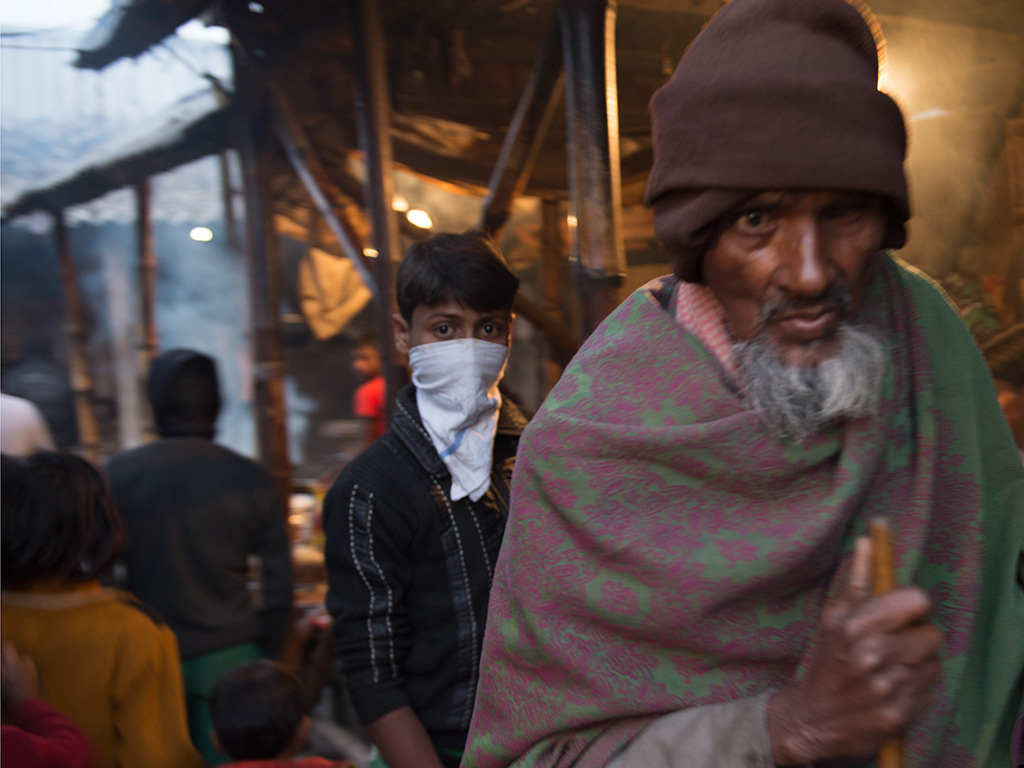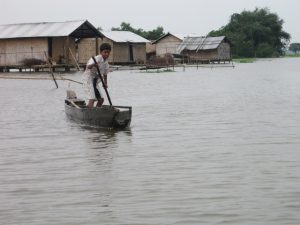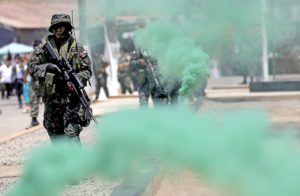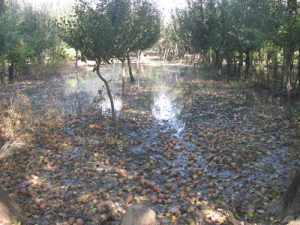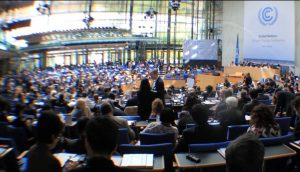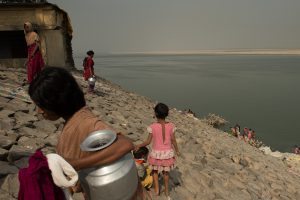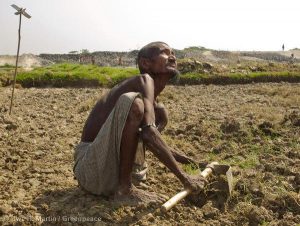It was 4.30am. The fog sat ghostly grey on the paddy fields and mango groves as we headed north from Murshidabad to meet the Ganga river where it enters West Bengal, in Malda district.On the edges of the highway, melting into the shadows of huts and coconut trees, heavily mufflered men idled beside bicycles piled high with wares, waiting for a break in traffic. At this point, India’s border with Bangladesh is 20km away. Smuggling is common; on any given day, everything from cows, electronics, medicines, rice to fish and flesh, plays hide and seek with the Border Security Force personnel.We did not see the Ganga till we were upon it.Stuck in a jam behind a long row of trucks, we inched on to a barrage that pinched the Ganga at Farakka, in the northern part of the state.The rise of silt, the fall of citiesThe Ganga, meandering through 2,500km and draining a quarter of her land mass, reaches the Bay of Bengal in braided distributariesThese navigable distributaries allow the hinterlands to access the Bay of Bengal, and that means trade.Himalayan rivers like the Ganga carry an important cargo: silt.
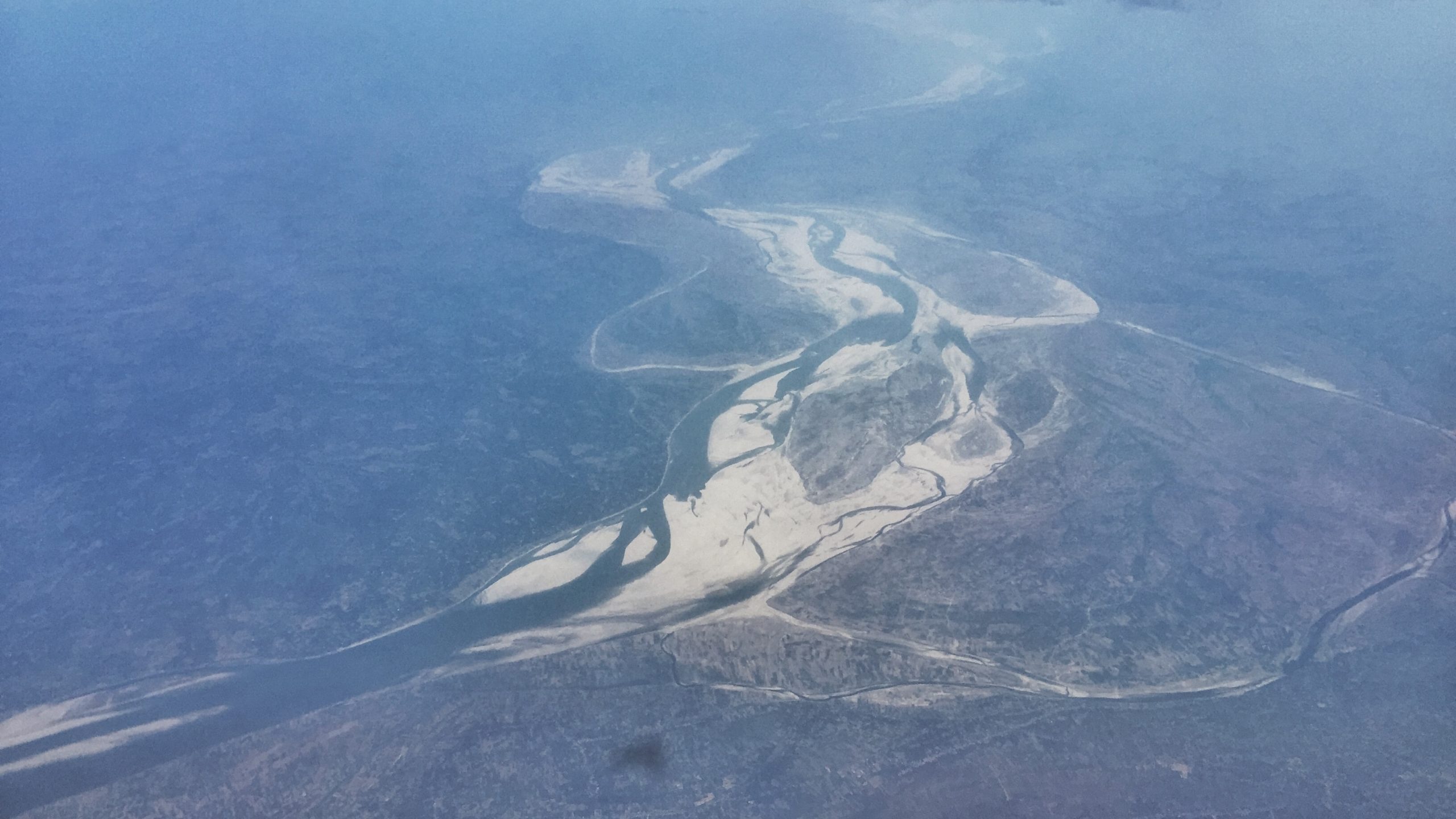
As she tumbles down from her lofty origins, the Ganga carts more sediment than most rivers in the world—almost four times as much as the Amazon. This sediment fertilizes the delta and the plains, and enables the growth of rice, millet, mustard and greens like coriander.Himalayan rivers wander in their deltaic reaches. They meander. They deposit silt in one channel here, block their own progress, and carve a fresh way out somewhere else. Swinging this way and that, fickle, wild, unpredictable, these muddy rivers move around, dumping their cargo of silt, creating deltas, making food-bowls.In Bengal, the Saraswati is an illustrative case study. It ruled the waterways for a few glorious centuries, but over time it also choked with silt.In the 17th century, the British were wresting Bengal from the Mughals. A settlement on another distributary—the Hooghly—became the port of choice of the 18th century: Calcutta.For the emerging British empire, the Hooghly was a gateway to Assam, a navigable waterway into the northern Gangetic plains. Trade reoriented itself away from Asia and in the direction of Europe. Calcutta on the east coast, and Bombay on the west became the Empire’s two most important ports.The Ganga, wild, brown, and strong-willed, had her own plans.
Through the 19th century, the Hooghly was gradually silting; by the early 20th century, ships wary of massive underwater shoals, had to wait for tides to turn in order to reach the port.
The port was in for a change and, so were the people of northern Bengal. The Calcutta Port Trust (now Kolkata Port Trust) tried (and continues to try, to this day) to dredge the river, with little success.
The river continued to lay it on thick.
The birth of a barrage, the decline of a land
In 1853, Sir Arthur Cotton, a British general and irrigation engineer, suggested interrupting the Ganga at Farakka. This, he theorized, would flush the Hooghly with the waters of the main channel of the Ganga. The Hooghly would become navigable, and Calcutta a buzzing port.
The British engineers failed to reach a consensus on a suitable site for the barrage, and the plan to resuscitate Calcutta lay dormant for over a hundred years—until 1957, when the Indian government revived the idea. They called upon a British expert, W. Hensen.
Hensen ratified Cotton’s idea of a barrage at Farakka.
Between 1961 and 1975, when it began operations, a 2.24km-long barrage was built at Farakka, with a feeder channel that pushed water into the Hooghly. It did not work.
Hensen had not considered that the Hooghly was a tidal estuary. The tides push in 78 times the amount of water flowing down the Hooghly at the height of the monsoon. There was not enough water in the river to push out the sediment that the tides naturally sloshed back with greater force.
The Farakka Barrage thus failed in the task it was constructed for—flushing sediment and enabling travel sans hindrance. The port continues to silt up. The barrage now supplies water to the NTPC Ltd plant just south of the barrage, helps in some irrigation, and, as my guide would explain, has a rather sinister unintended consequence.
Landlords at night, beggars in the morning
Tarikul Islam would be my guide as I wandered upstream of the barrage. He was waiting for me outside his jewellery store in Bangitola, a settlement of erosion-affected people in Malda district.
After a few cups of laal saa, milkless, sweet ginger tea, we headed to the northernmost point of West Bengal.
The sun was beginning to dip as we climbed into a long, low country boat. Following a circuitous route that skirted shoals and new sandbar islands, we made our way to the ancient town of Rajmahal, in Jharkhand, where the river enters West Bengal.
Here the Ganga, pregnant with silt, comes around a bend and strikes the Rajmahal hills. Finding no purchase against the hard stone of the right bank, the river ricochets, ramming into the soft clay on the left bank.
What the barrage did to the river at this point was unnatural, and not pretty.
In rudely obstructing the natural course of the Ganga, the Farakka Barrage blocks the transport of sediment. With nowhere to take the silt, the river dumps it at the barrage.
Over time, these deposits accrete, raising the river-bed ever higher. Finding its progress checked, the river carves new channels out of the trap and often, these channels push into the land, eroding all that lies in their path.
As we stand at the ferry dock in Jharkhand, looking out over the Ganga as it courses into West Bengal, Tarikul points out the old channel and the new. “Everyone in this area of West Bengal has lost everything to the river—some lost homes and land eroded 17 times, lost completely to the river,” he says. Tarikul has lost homes and land thrice.
Professor Kalyan Rudra, chairman of the West Bengal Pollution Control Board, has worked extensively on this problem and studied the geomorphology of the area. In a 2004 paper he explained the situation. He states, “Deltaic rivers have a tendency to oscillate widely. This ‘swatch of meander sweep’ is proportional to the discharge flowing through the river.
The case of the Ganga in West Bengal is quite different. The river in this stretch upstream of the Ganga is so clogged with sediment that it is compelled to alter course. The mighty river even threatens to outflank the Farakka Barrage and open a new route through the presently moribund channels of Kalindri and Mahananda.”
The Kalindri today has no water flowing through it. It is lush with paddy fields. The Mahananda, on the other hand, flows thinly through the loud press of Malda town.
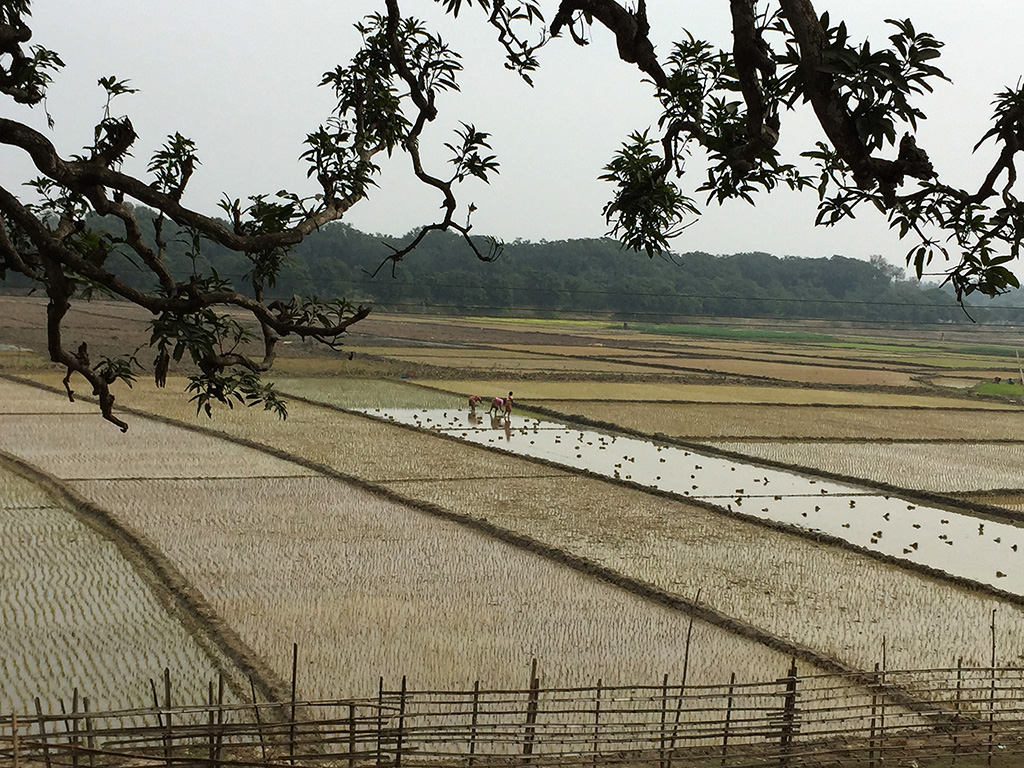
If the barrage forces the Ganga into taking these dried paths, it could destroy NH 34 and threaten nearly four million people in Malda district.Professor Rajiv Sinha of the Indian Institute of Technology in Kanpur has done an extensive study using remote-sensing technology and survey maps to tell the story of the land before and after the barrage. He believes the management of the barrage is an error. “You don’t just build a barrage on a river like the Ganga and forget about it. This is not the Thames. The sediment flows we are talking about are enormous. Impede Ganga’s progress as the barrage does, and the sediment has nowhere to go,” he says.Professor Rudra puts the scale of the sediment problem in perspective: if a truck carries seven cubic meters of sediment, the number of trucks needed to dredge the Farakka Barrage could go around the equator 126 times!The people of Malda are caught between the sediment and the wandering, eroding river.Unlike earthquakes and floods, erosion is not considered a “natural disaster” in the calculus of bureaucracy. Thus, where governments are quick to announce “relief” in the event of a disaster, loss due to erosion is neither calculated, nor compensated.“We lose our world,” Tarikul says. “Everything goes into the river, leaving us empty-handed. And the government does not consider this a disaster—there are no allocations of funds for relief.
“Raat ko zamindar, savere ko bhikari (We go to sleep as landowners and wake-up as beggars),” he says.
Lost and found—and lost again
As the Ganga ploughs through the plains, it regurgitates the sediment and soil as sandbar islands known as chars. These chars are birthed by the river, and reclaimed, and birthed again elsewhere; they defy standard land/water classifications, and “belong” to no one.
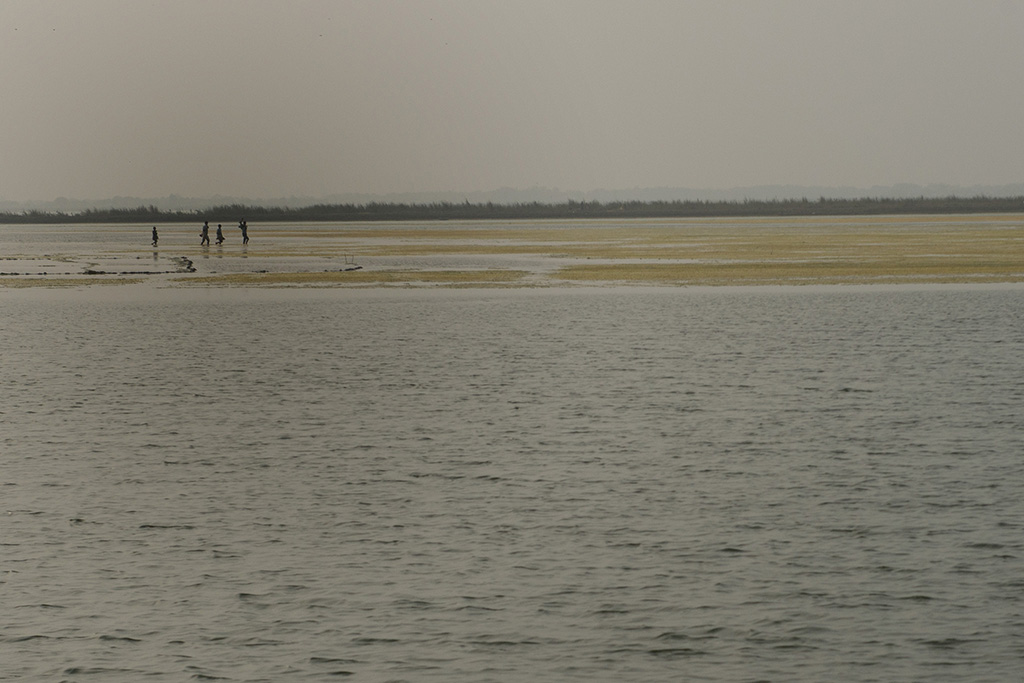
These deposits of silt are rich, fertile; they yield bountiful crops; they tantalize with possibilities, but are too ephemeral to sustain planned lives and livelihoods.
The truly desperate take refuge on these chars. They till them and reap rewards till the river takes it all back, leaving them displaced, yet again.When the Ganga swung wildly eastward into the channel it occupies today, it threw up a large char just off the right bank. Homeless people from the lost villages on the river’s left bank in Malda district made a new home here, and began to farm in Palash Gachhi. It is like most chars—fertile, unowned, and unserviced—with a disconcerting subtext.When it appeared, it showed up on the wrong side of the Jharkhand-West Bengal border—which, unlike other state borders, is not fixed. For some inexplicable reason, the Survey of India demarcated a part of the border between the two states as “the path the Ganga takes”.The problem is that the Ganga adheres to no permanent path. It moves. A lot. And the border moves with it.
Neither side likes the idea; both dispute the border. Jharkhand claims this char (which has over time added more sediment and joined the mainland) as its own—but it does not claim the people who live on it. Thus the people of Palash Gachhi are nominally Bengalis living in Jharkhand—they fall between bureaucratic cracks and can avail of no services from either state.

They are the nowhere people—nowhere on any government’s radar, living in the here and now, unsure of what tomorrow holds.Dozens of children flock around us, eager-eyed and bright-faced. Reena, 12, says she wants to become a teacher. Gehul, 14, wants to be a maulvi. They are the exceptions—children who have some notional idea of a “future”. Most others just return blank stares when I ask what they want to be when they grow up.Childbirth here is inherently hazardous. Rabha Bibi lost her daughter at birth because she couldn’t reach the hospital in time, she recalls.When Rabha Bibi went into labour, four men carried her on a khatiya (a woven cot), 3km to the ghat. From there, a country boat took almost an hour to reach Panchanandapur village. From there, the men carried her another 4km to the hospital.It was the nearest medical aid available, and the journey took a precarious 5 hours even as her labour intensified. The story plays out in a generational loop. Rabha Bibi’s daughter has lost a child.Anecdotal evidence supports the belief that infant and maternal mortality on these chars is inordinately high, for most births occur at home, with no proper medical oversight. State averages bury these local spikes.Since it’s difficult to make a living off the char, the men go looking for jobs elsewhere. Some leave home when they are only 12 for Mumbai.
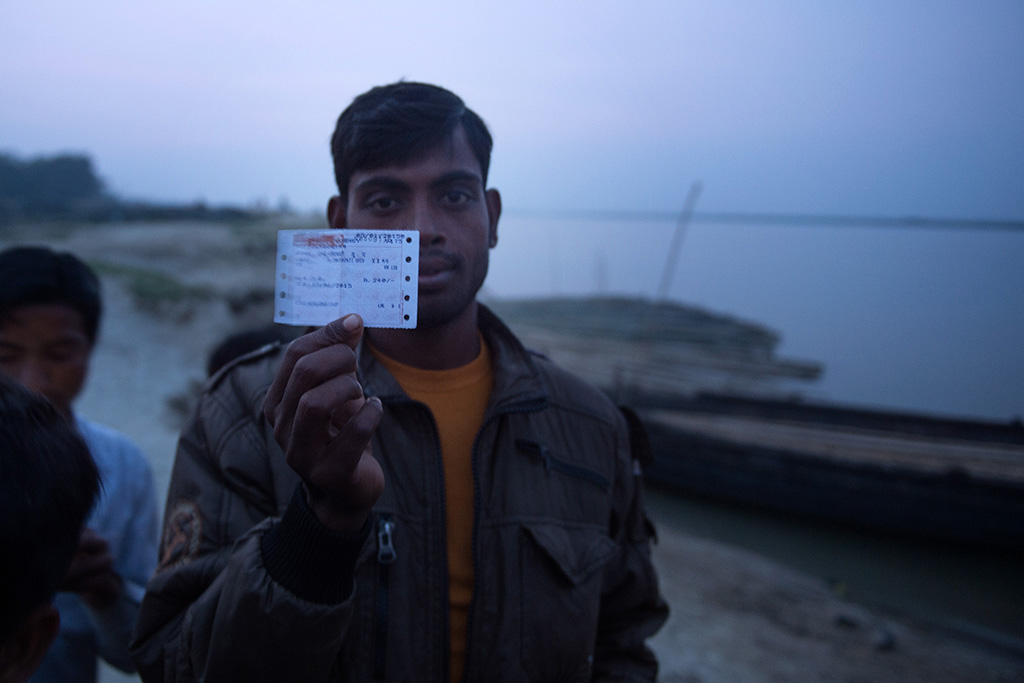
When soil is livelihood, land is home
“See? The erosion doesn’t stop at our doorstep, it gnaws its way in, eating through every family,” says Tarikul. Almost every able-bodied man from the region now lives in Mumbai—and this is true not just of the chars but also of the villages on the banks.Tarikul was no exception. When his family lost their land to the river the first time in 1982, his father sold the door of his house so the family could eat. Tarikul bought a ticket to Mumbai. It cost him Rs.56. He slept on footpath—it’s only for a day or two, he consoled himself. It took him years to garner enough goodwill to get permission to sleep inside a shop.By day he sold tender coconut and earned Rs.80 a month. He did not drink, or smoke. He apprenticed at a jeweller’s store in his free hours. Over a 10-year period, he managed to save enough money to return home in 1992.Tarikul’s friend, Mohammed Inamul Haque, teaches at Panchanandapur. He remembers the repeated devastation well.“There were once 628 shops in the market. A lot of trade would go through Panchanandapur when I was secretary of the market; it was famous. And I saw the river swallow it in front of my eyes.”There were no banks in Panchanandapur. People stashed their savings at home. They lost everything. Businessmen and landlords were suddenly forced to beg for work and food. “This is not just my story,” Haque says. “Everyone here has stories like this. Some people had 200 bighas (around 65 acres), others had 400.”Haque lost 100 bighas. He has endured the seismic effects of erosion seven times. After the last displacement, he put all his savings into a small piece of land 5km from the river and built a sturdy brick house. If he lost this too, he would be left with nothing. “While it was being built, I went to the roof and prayed hard.”The house has sheltered him for 12 years—long enough to nurture a sense of security. Except that, the river has crept up too—it’s just 500m from his door.
Man proposes, government disposes
Malda has likely lost over 250 sq. km of land—more than half the size of the city of Chennai—to the river.Each of the swallowed bighas once employed people—sometimes all members of a family. Land sustains them—they grow, they eat; they lose their land, they starve and, often, migrate.Besides agriculture, the only industry in the area is beedi-making, but the income is meagre, insufficient to sustain families of five or eight or 12. Rolling 1,000 beedis takes two days and fetches Rs.100. If the beedis the women make are surplus to demand, they are not paid.

Haque and Tarikul formed a committee in 1995 as fulcrum for the erosion-affected people.Their demands were simple then, and are the same today: They want the government to release information on vulnerable areas, acquire that land, pay the villagers at market rate, and rehabilitate them.They don’t want the government to “sanction relief”, they know from experience that it will be siphoned off by middlemen and functionaries. They would rather the government acquire the land at risk, and in return give them electricity, schools, hospitals, and a life away from the erosion.The government, instead, has pumped crores into fortifying the banks with boulders to stem erosion. It costs over Rs.1 lakh to protect 1m of riverbank—and it doesn’t guarantee against erosion, says Prof. Rudra. The river washes away the boulders too. Yet the effort continues. According to estimates, the government has spent several crores of rupees on futile fortifications.“Often, they start this useless work in the monsoon, which is stupid. How can you work on fortifying the bank-line when the soil is already wet with rain?” asks Tarikul, who has seen it all before.
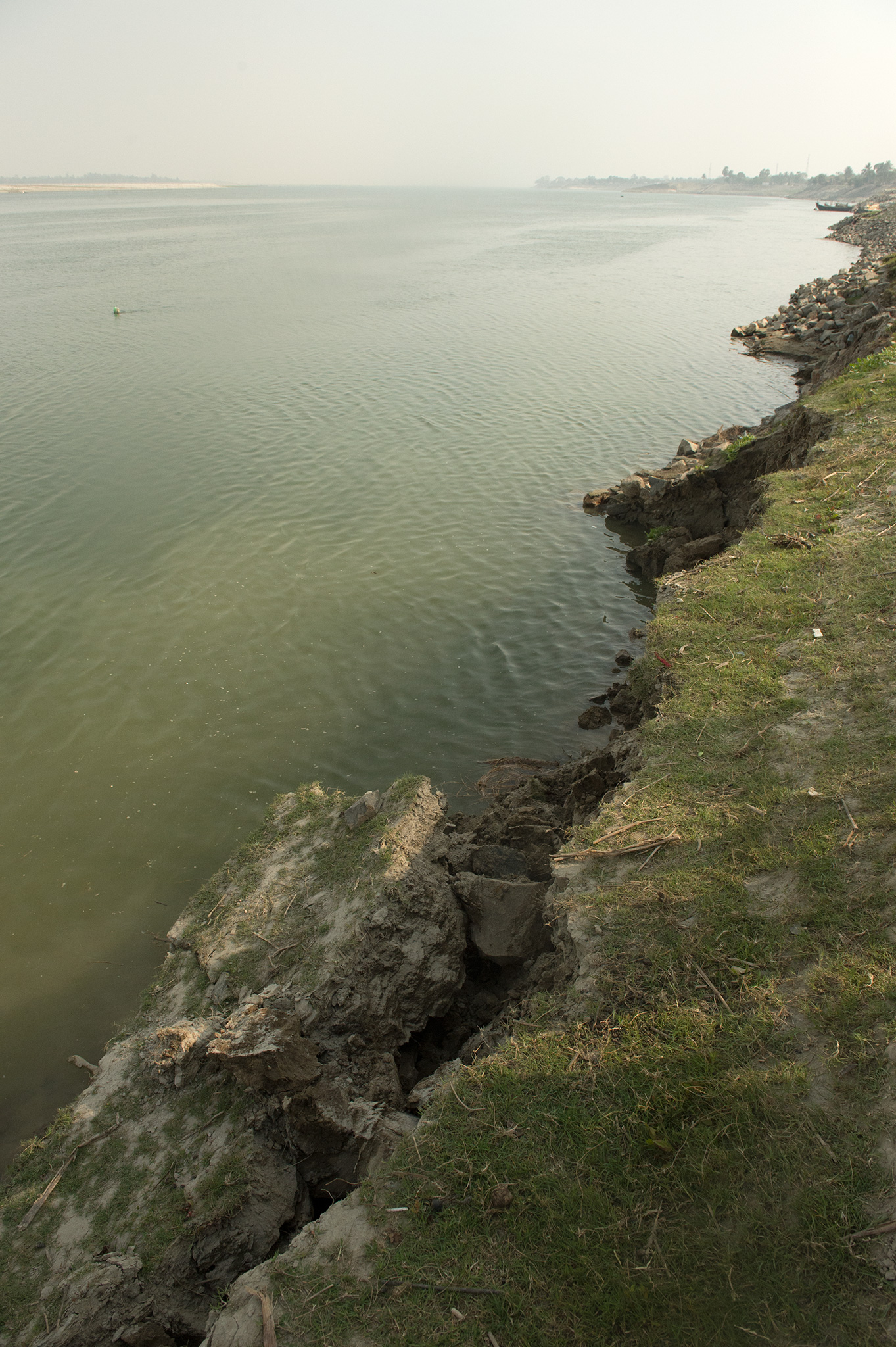
Professor Rudra agrees with Tarikul’s assessment. In his 2004 paper, he quotes from a Comptroller and Auditor General of India report dated March 1999:“Implementation of anti-erosion scheme suffered all through from recurring weakness in planning, execution and monitoring at senior level of the Department and also the Government. Disregard of the recommendation of the Experts’ Committee, absence of master plan, delayed tendering, non-testing of soil before execution of work, hasty execution of work, appointment of large number of small contractors and work during full monsoon in unfavourable weather condition resulted in frequent and repeated failure of the work leading to wasteful and unfruitful expenditure”.There is thus consensus among the locals and experts. It is only the government that fails—or refuses—to see what is obvious or do the right thing by the people.Haque knows the ground realities. He knows the genesis of this systematic destruction, and has witnessed its repeated occurrences. He understands the dynamics of apathy and its bedfellow, corruption. He explains it all to me like the teacher he is, a gentle smile on his face as he talks.I interrupt. Are you not angry? I ask.He laughs. He picks up a plate.
“How much can this plate hold?” he asks. “You can fill it only so much. After that, there’s nowhere to go. My anger is like that. I could hold only so much. It overflowed, and then it disappeared. I am pushing 60. After seven losses, I still have a roof over my head.
“I don’t know how much longer it will last—the river keeps pushing closer. But for now I have a roof, and I am grateful.”
A grant from the Asia Foundation and The Third Pole to investigate issues on the Ganga enabled Arati Kumar-Rao to undertake this assignment. A condensed version of this story was first published in Mint, on March 28, 2015.
